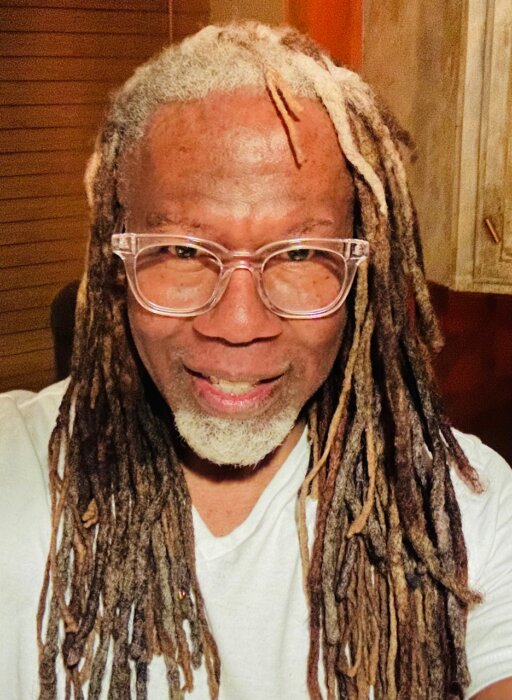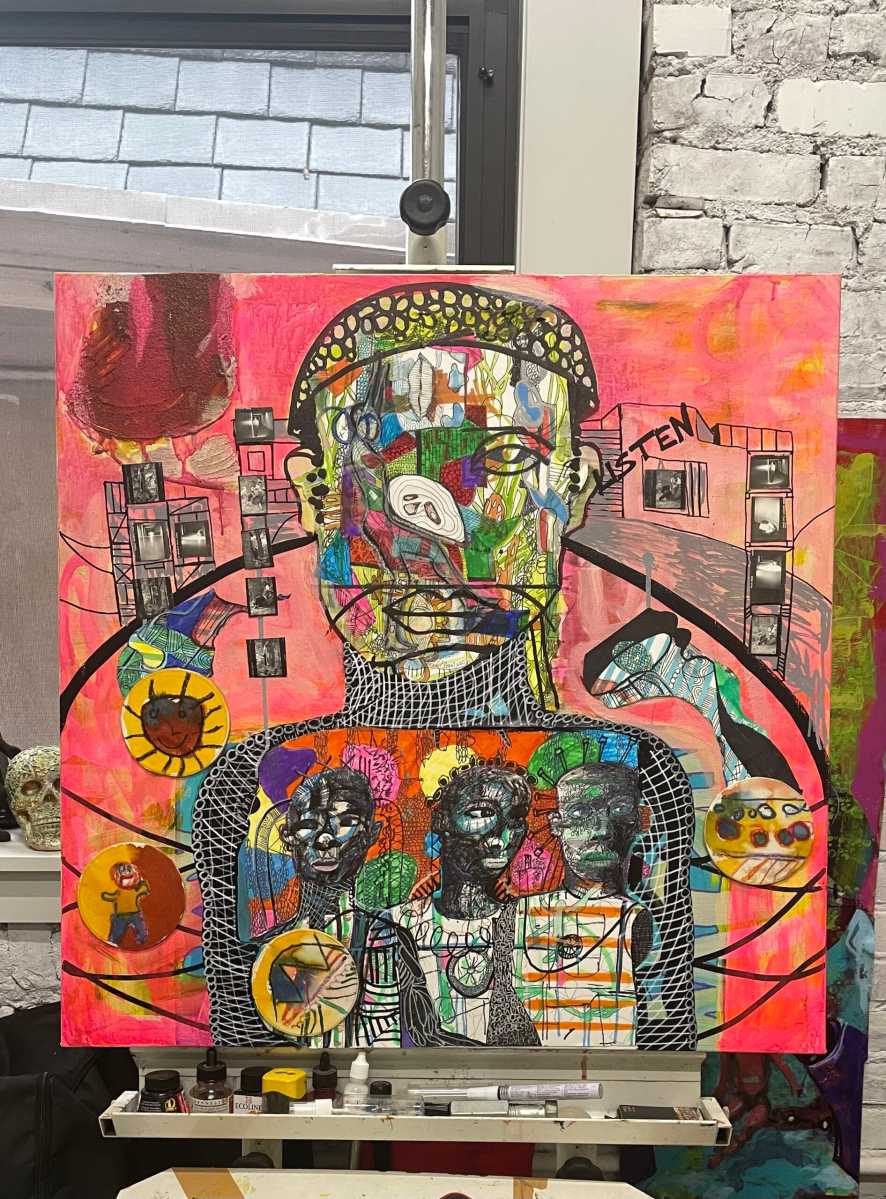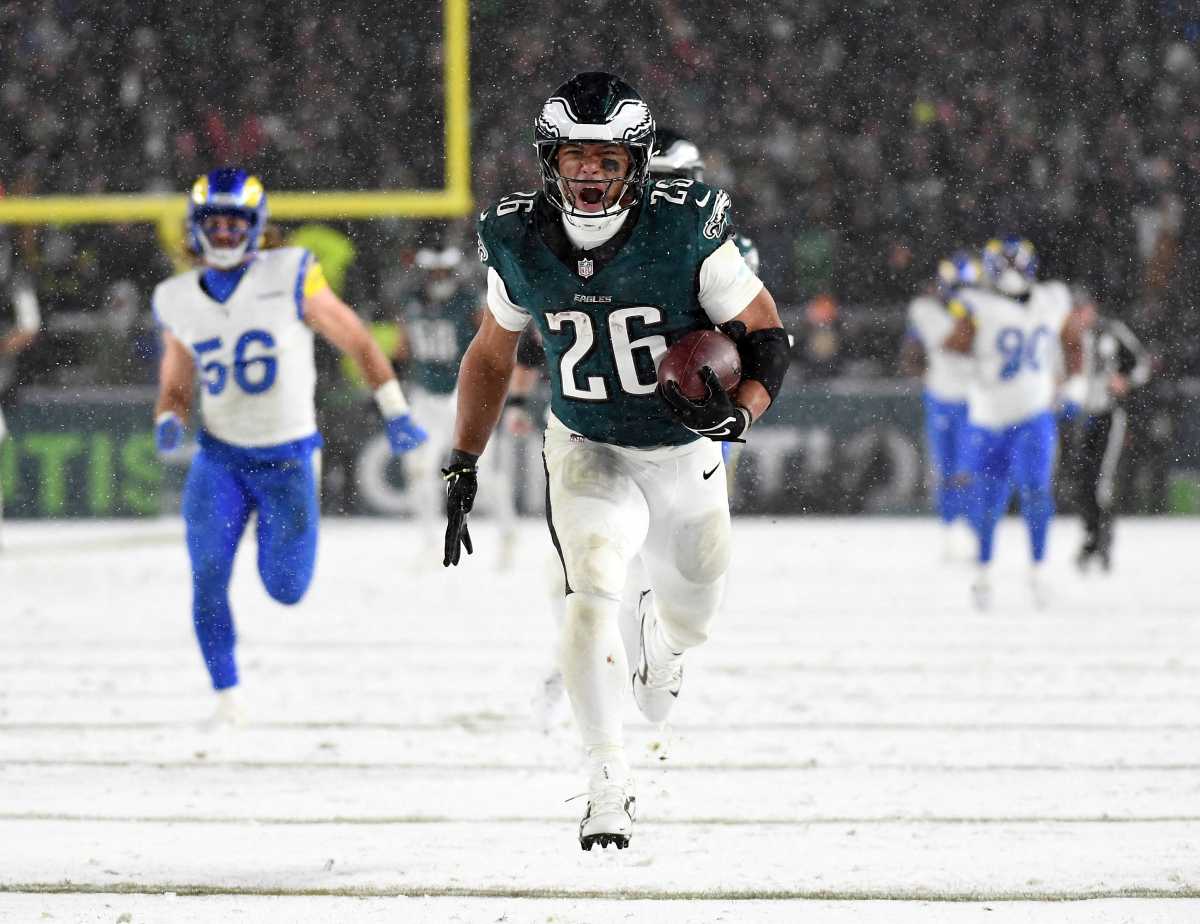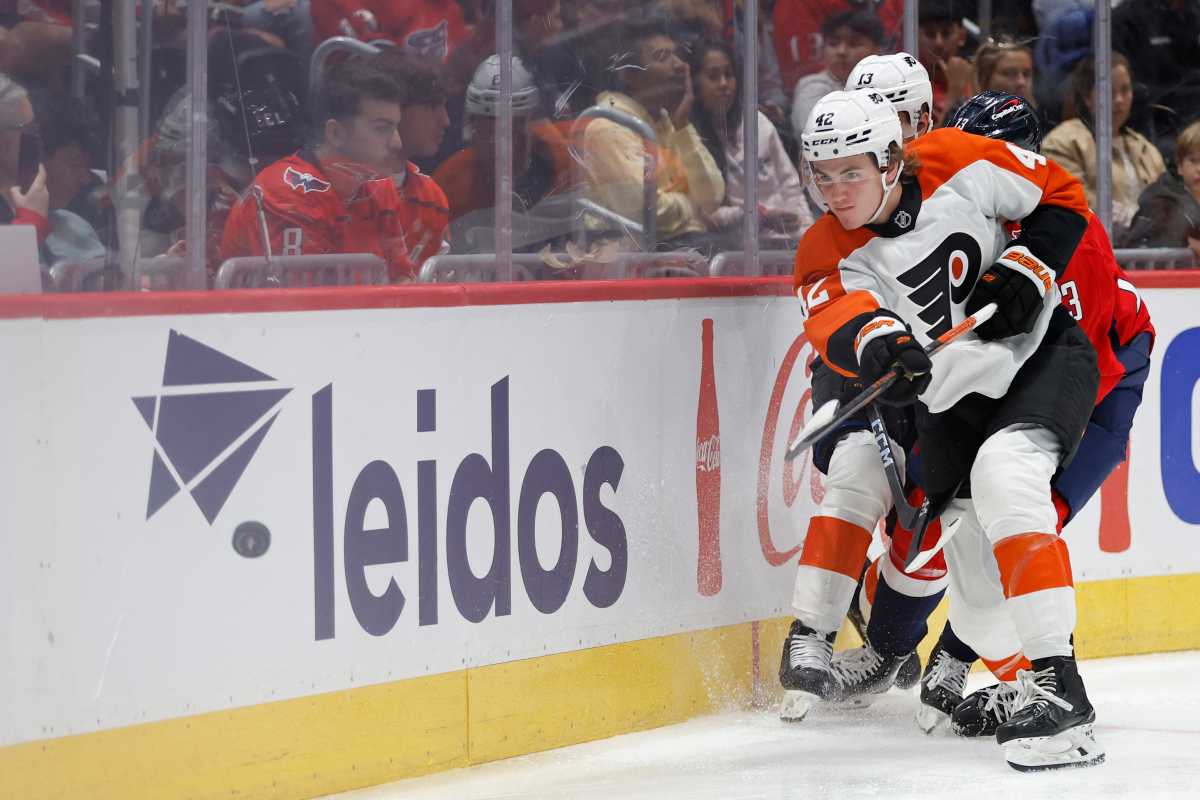When Record Store Day arrives this weekend, the long history between Philadelphia painter Mikel Elam and icon Miles Davis will shine in a new album release, ‘That You Not Dare to Forget‘, from M.E.B. (formerly Miles Electric Band).
The Vince Wilburn, Jr-led ensemble of Miles’ alumni and friends features new, free fusion songs from a multi-generational cast, along with two previously-unreleased Miles Davis trumpet solos.
To this mix of rarity and raw energy comes its wildly picturesque cover art from beloved Germantown artist Mikel Elam.

Elam spoke to Metro from his Germantown studio about love, art, fashion and Miles.
How did you become part of Miles’ universe and work as his personal attaché, couturier, and painting sensei?
I met Miles through an aspiring fashion model Lydia Tracy who saw Miles at Lehigh University in 1987, got invited backstage, and a friendship ensued between them. Miles invited Lydia to his art show at the Tunnel nightclub in New York wherein he tells her he’s looking for an assistant. Lydia gave him my name. Four attributes which helped me get the job was my art school background: I had a passport with previous trips to Europe, a love of fashion like him, and a calm and patient demeanor.
How you influence each other’s work as painters?
Miles mixed colors in a very fluid way, sometimes creating puddles of pigment, sometimes washy in nature, oftentimes muddy, earthen. It was a technique he saw in African art. I was more of a bright colorist, and my process was clearly his opposite. Miles was open to learning new things, as was I, so we could talk for hours as to why I chose my imagery or what his images meant to him. Sometimes his work was based on his love of a specific person’s body parts — like he’d say, “she had incredible legs like a dancer.” Usually, his muses were also lovers. My work is also figurative, more primitive then than now. Thinking about a certain sense of primal expressionism. I sometimes used references from photographs. The tribal elements is where we connected.
Miles started to change styles in the last year of his life. He was looking at people like Basquiat, Francesco Clemente, Antonio Tapies. His work became much more color field-driven. Bolder in shapes and forms. I believe Miles would have become an accomplished painter had he lived longer.
Your work is metaphorically, amorphously and experimentally figurative and futuristic with low earthen tones below, and high bold colors on top. What is your paintings’ evolution from that start to where you are now?
I was always interested in spiritualism, and still use some of the elements from my past. I’ve replaced my earth tones with a complex keyed up color palette, using pigments which almost oppose each other within the narrative. The idea is to create a tension within the work – a push-and-pull of color, texture and storytelling. My work in the last few years has been centered around race, identity and perception.
I had the realization after painting for more than 35 years that I was viewed as just a color, not a human being. I wasn’t even a number unless incarcerated or in the social welfare system. The turning point was George Floyd. Now my work has been political. Still, I am an optimist, and have hope. This is where the spirit in my work continues. I describe what I do as Afro-futurism, a vision of Black people as integral to a future society.
Your desire to work within the Miles Davis continuum must truly only lift when the highest standard of work arises – such as Vince Wilburn Jr’s M.E.B.
I am a fierce devotee to Miles’s legacy. When Vince created M.E.B, he called me to make the cover of which I am honored and grateful. Vince has access to so many great artists, and Miles is big business. Unfortunately, sometimes there are outside elements trying to get money or fame in connection to his legacy. I have never asked for much after Miles from them. I don’t feel entitled.
The experience was great: traveling with Miles. His mentorship, his concern for me to grow, that’s worth millions. I made a pact that I would never do anything which will tarnish his contribution to music…. Vince called me to listen to 2 tracks, and I created 4 images based on those tracks. All different. I wasn’t sure which one Vince would like for the cover.
And what is your take now on the final choice for M.E.B.’s album cover of your design?
When Vince chose the image for the cover out of the four I presented to him; I was thrilled. It was the most urbane and edgy of the images. A bit art brut. The design team created a beautiful package. The vinyl version is pink and fits perfectly with the cover art. I thought that this album is reflective of the times we live in. This might be what Miles would be thinking about as well. Jazz has evolved. Miles always wanted that. He was very progressive. Vince understands this well. He grew up having Miles as his uncle. Then he played with the band for several years both on stage and in the studio. M.E.B. is Miles Davis today.
‘That You Not Dare to Forget‘ by M.E.B. will be released on April 21, with a pink vinyl release date of April 22.



























